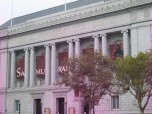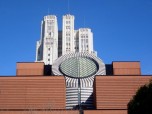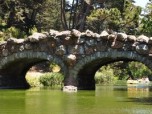The California Academy of Sciences is one of the largest and oldest museums of natural history in the entire world. The Academy began as a society for offering educational information in 1853. In 1989, the academy buildings were damaged significantly leading to the closure of the institution. The Academy finally opened on September 27th, 2008. This institution is committed to undertaking research and looking for new and innovative ways to inspire and engage the public. A visit to the Academy can prove to be a great family day out because of the various intriguing exhibits that one can see in the different sections of the institution.
Morrison Planetarium
This is the largest digital dome in the world. The dome has a 75-foot diameter projection screen, which is tilted at a 30-degree angle. A fusion of scientific research, software and technology leads to production of accurate experiences on the 75-foot diameter screen. The planetarium can hold 290 people and guests love it because the imagery created on the screen gives the feeling of flying and rather than simply watching a movie.
Philippine Coral Reef Gallery
This coral reef is one of the deepest coral reef displays in the world. The coral reef is 25 feet in depth and holds around 212,000 gallons of water. The coral reef is home to different animals like stingrays, blacktip reef sharks and many other colorful fish.
Tusher African Hall
Penguins, chameleons and cichlids make the African Hall a great place to visit. The most famous creatures in the African Hall are the penguins whose home is modeled like Boulders Beach in South Africa where the penguins live in the wild. Through the Tusher African Hall, you get to experience African landscapes as well as cheetahs, zebras, lions and antelopes through the glass windows.
Northern California Coast Gallery
The Northern California Coast tank holds 100,000 gallons of water. The tank is a replica of the Gulf of Farallones National Marine Sanctuary. There is a walkway along the surface that gives the visitors an opportunity to smell the seawater and see the tide pools being drained, or filled with water. There is also a small beach where the water spills. Beneath the surface of the water, one can see a number of animals like sea stars, anemones, herring rockfish and sardines.
The Swamp Gallery
This is home to an albino alligator known as Claude. There are also several snapping turtles in the swamp. The gallery has a great view as people can see the animals from an underwater window as well as from the surface. This gallery is a favorite place for many people because of the opportunity to see the incredibly rare albino alligator.
The Rainforest Exhibit
The Rainforest exhibit is housed in a four-story 90-foot glass dome. This is the largest glass dome in the world to hold a rainforest exhibit. Visitors get the opportunity to walk in a real rainforest with the temperatures and humidity being maintained like those in a real rain forest. The rainforest is home to over 1,600 animals, including amphibians, reptiles and birds. This rainforest contains a wide array of plants like Theobrama cacao, the plant from which people make chocolate, West Indies mahogany, and different types of shrubs. The interesting thing about this Rainforest exhibit is that each level contains a specific rainforest setting, which includes Madagascar, the Amazon, Costa Rica and Borneo.
Kimball Natural History Museum
This is one of the most amazing museums in the world. The Kimball Natural History Museum addresses two important things: the evolution of the earth and the maintenance of life on earth. The California Academy of Sciences has conducted over 150 years in research. They have over twenty million specimens from which they can research different things. You get to learn more about different types of earthquakes and the diverse ways different communities prepare for these natural phenomena.
The California Academy of Sciences is one of the best places you can go and learn more about the earth and the history of its evolution. You also get to see different creatures closely, which is something that you may never have experienced. The research carried out at this institute is reliable and the knowledge gained can be passed on to people who would like to know more about science.






























